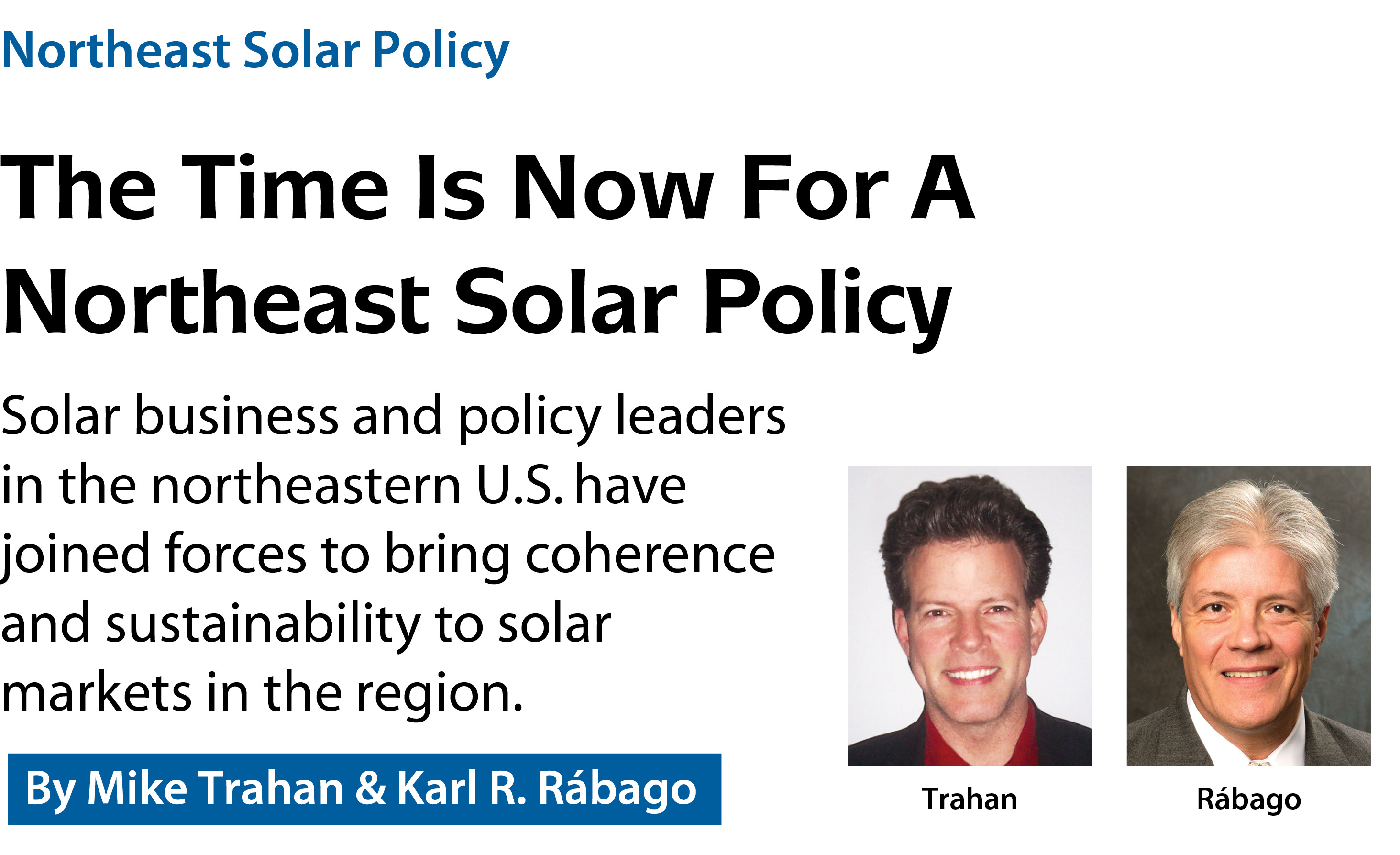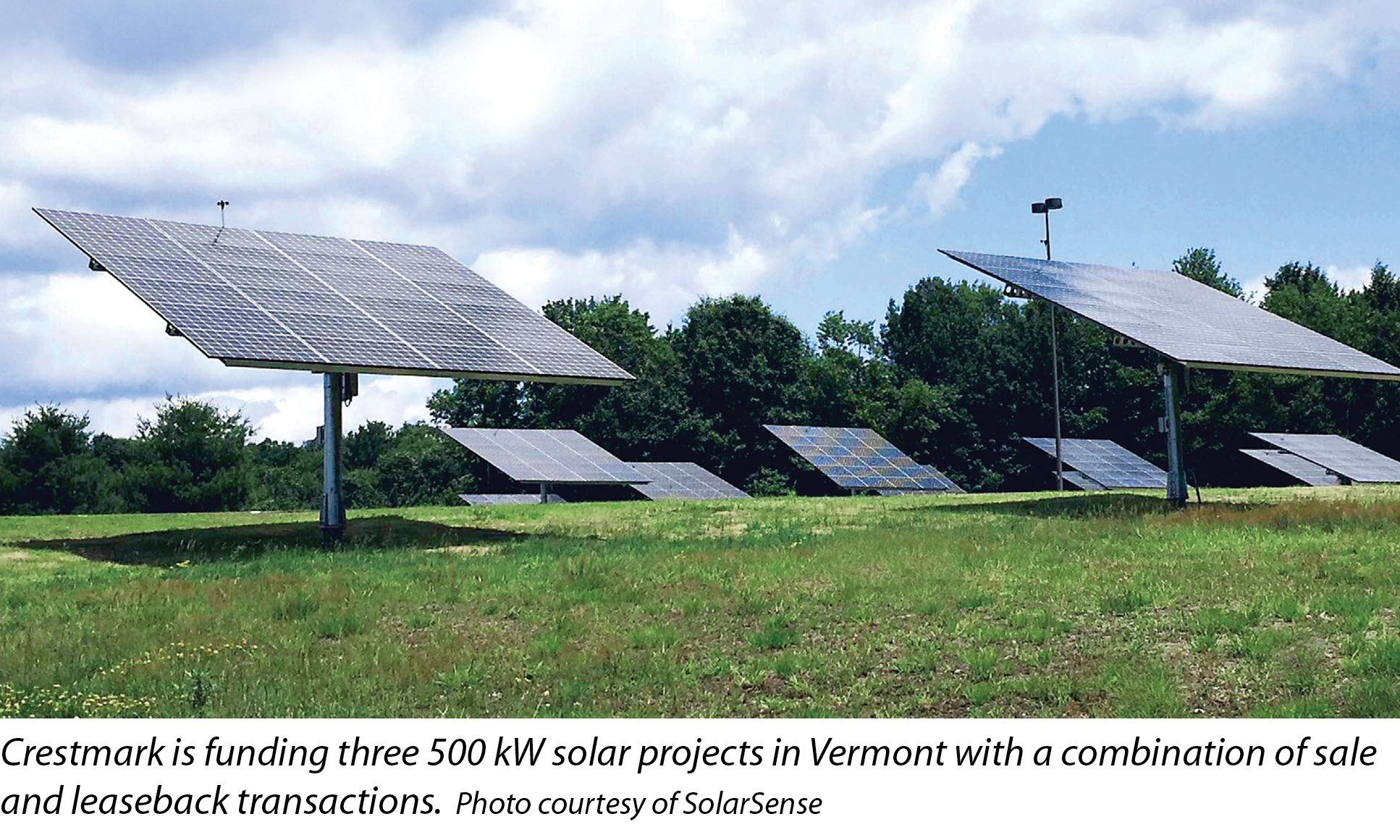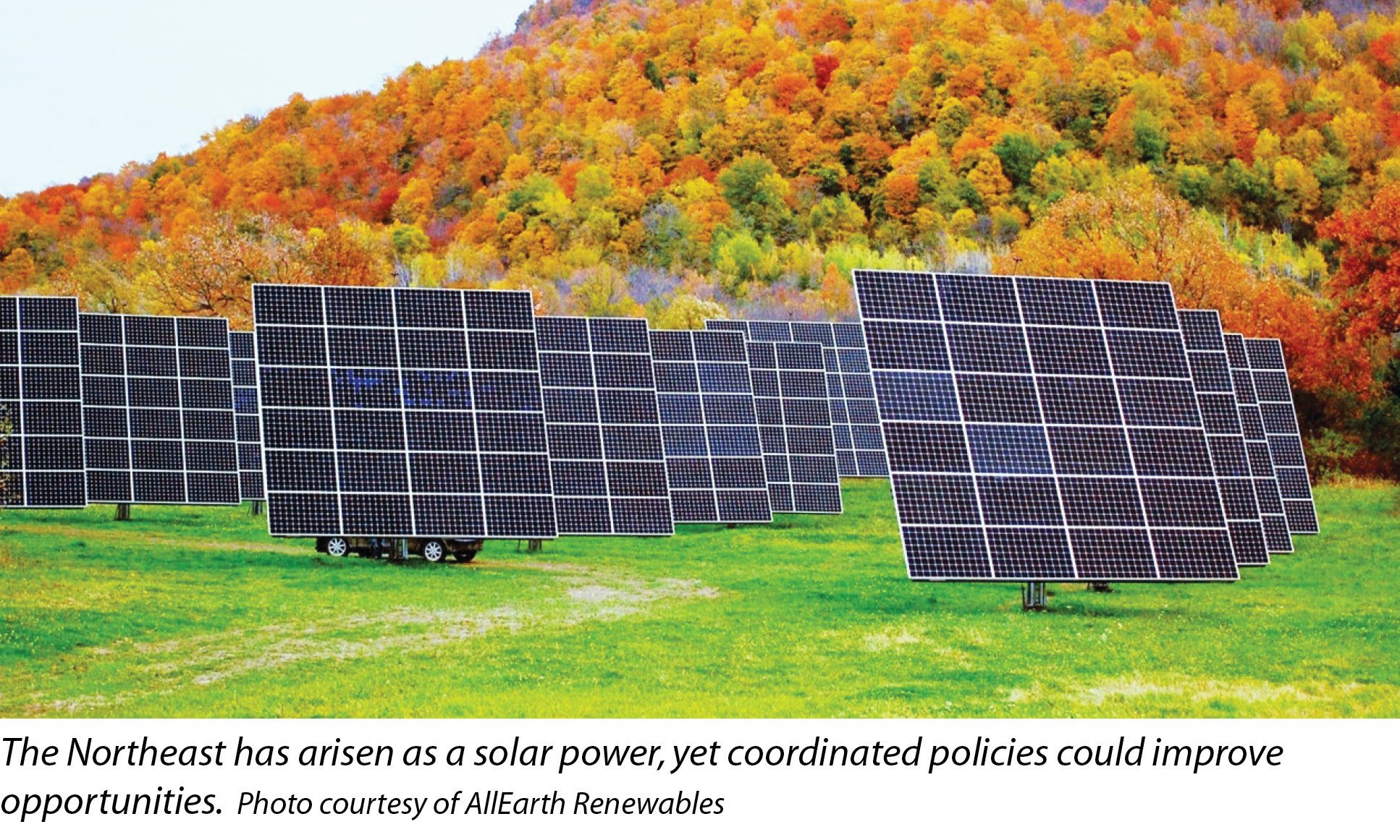

301 Moved Permanently
The speed at which solar is being installed today is testing the limits of state solar policies far sooner than the policy architects expected. And, it is not just solar production caps that are being re-examined. Incentives, interconnection policies, permitting, zoning and net metering are coming under fire across the U.S.
On June 1 of this year, Massachusetts Attorney General Maura Healey announced her support for lifting her state’s cap on commercial net-metering solar production in National Grid territory. Hitting the cap has brought commercial solar development in the territory to a halt.
National Grid and other aligned groups stood by the cap, repeating the now familiar but unsubstantiated claim that those without solar panels subsidize those with them. Put on the spot, Massachusetts Gov. Charlie Baker’s administration responded that, barring a sustainable, long-term solar solution, he would not support a net-metering cap increase.
In Connecticut, reaching a 30 MW residential solar goal this year - eight years early - could have meant a premature end to the home solar market. A crisis was averted when Gov. Dannel Malloy’s bill to increase the goal tenfold passed through the general assembly the day before the legislative session ended.
Such diversity of opinion in solar market policy is all too common.
Debates and arguments about solar are also arising in the courts. Recently, the Florida attorney general joined the state’s largest electric utilities in petitioning the Florida Supreme Court to block a ballot initiative that would open the Florida solar market to third-party sales.
Expiring deadlines, eclipsed caps and an organized opposition to solar have required more effort from state solar associations and their members. Artificial limits that seemed far in the distance have become short-term limitations, and solar markets are experiencing boom-bust cycles that are devastating to sustainable market development.
Ironically, these boom-bust cycles can be traced, at least in part, to a piecemeal approach to solar market policy development that involves proposing and addressing issues often only one year at a time.
Nowhere in the U.S. is the challenge of coherent, sustainable solar markets more real than in the Northeast.
The Northeast region - roughly the same land area as the state of California - currently operates as nine different state markets with nine different sets of rules. If you stand in the center of the Northeast region and drive two hours in any direction, you will enter another solar dimension. This policy discontinuity costs money and limits the potential of solar market growth across the region.

A common voice
Addressing these issues has prompted state solar business associations in the Northeast to form a unique alliance to accelerate the deployment of solar energy. Called the Northeast Solar Energy Market Coalition (NESEMC), the multistate partnership brings together members representing well over 500 of the most active solar businesses operating in Connecticut, Maine, Massachusetts, New Hampshire, New Jersey, New York, Pennsylvania, Rhode Island and Vermont.
These business people, with on-the-ground perspectives, will be teamed with policy experts from the Pace Energy and Climate Center (PECC) and the State University of New York at Albany. Together, they will bring approaches to policymakers that have been designed and adapted with the broader Northeast market in mind.
Because of their vested interest in successful deployment of PV throughout the region, solar business associations and their members are highly motivated to address the region as a whole. They feel it’s worth the effort, as does the U.S. Department of Energy’s SunShot Initiative, which made a $600,000 cooperative award to provide support to the NESEMC. The SunShot Initiative expects the NESEMC to determine methods for deploying more solar in the Northeast and to determine how to make a coordinated campaign in the Northeast reproducible across the country.
The NESEMC fills a vital gap in regional policy coordination because individual solar companies and state-level solar energy associations face fiscal challenges every day in immature markets and lack the margins necessary to coordinate effectively across states.

Plan of action
The NESEMC will use policy education, outreach and dialogue with sound policy analysis to accelerate solar market growth in the region. Coalition efforts will be complemented by coordinated advocacy activities by the individual state business association members. Ultimately, the group aspires to achieve a five-fold increase in solar installations (to 10% of the region’s peak utility load of 10 GW), jobs and revenues within 10 years.
The NESEMC will achieve this goal through the following programs:
- Harmonizing and streamlining existing state and local regulatory policy;
- Implementing targeted value chain efficiency improvements, including financing strategies to retain the revenues and economic development benefits that PV power delivers to the region;
- Streamlining permitting, interconnection and other soft costs; and
- Promoting policies that allow the value of solar energy to be captured by the electric grid and delivered to ratepayers throughout the region.
The organization’s first task involves establishing a leadership position in solar PV market policy in the Northeast region. The plan is to engage with regulatory authorities, utilities, solar PV businesses, and policy and advocacy leaders throughout the region. These efforts will be a core element of the coalition’s work.
With the help of law school interns working at the PECC, the NESEMC is analyzing and mapping the policy and market landscape in the region. This activity involves the ongoing assessment, monitoring and analysis of solar market conditions, major policy and market initiatives, ongoing deliberations within regulatory and legislative bodies, and active solar policy pilot projects across the region.
In the end, the NESEMC will be successful if it helps to reduce complexity and project development costs at all levels, injects a greater reliance on standard, introduces valuation methodologies to regulatory approaches, ensures that practical experience is translated into other jurisdictions, and helps the utility sector become more amenable to solar PV development.
Northeast PV policy
The NESEMC’s approach to PV deployment combines a focus on the net value of PV generation via appropriate tariffs, efficient and transparent financing mechanisms, and the encouragement of demand-side, PV-coincident load patterns via load-shaping retail tariffs. Currently, the Northeast is at the forefront of considering such policy approaches.
One state initiative that’s ahead of the game is the New York Public Service Commission’s Reforming the Energy Vision proceedings. Meetings with New York State officials have indicated strong support for a scalable pilot project to test the effectiveness of the innovative solar-enabling steps, including value of solar and solar load-shaping tariff plans.
Additionally, the Northeast is the epicenter of innovative regulatory activity and experimentation with solar and other distributed energy resources in the context of microgrids and grid resiliency. There is a natural and sizable regional market that runs from New Jersey across the greater New York Metro area, Connecticut, Massachusetts and on to points north. Harmonizing policies, reducing transaction costs, standardizing procedures and protocols, and encouraging the spread of innovative financial products all serve to attract new investment in a resilient and clean grid.
Solar is off to a good start in much of the northeastern U.S. The NESEMC aims to make the region as a whole a leader in affordable, sustainable solar PV energy.
Northeast Solar Policy
The Time Is Now For A Northeast Solar Policy
By Mike Trahan & Karl R. Rábago
Solar business and policy leaders in the northeastern U.S. have joined forces to bring coherence and sustainability to solar markets in the region.
si body si body i si body bi si body b
si depbio
- si bullets
si sh
si subhead
pullquote
si first graph
si sh no rule
si last graph